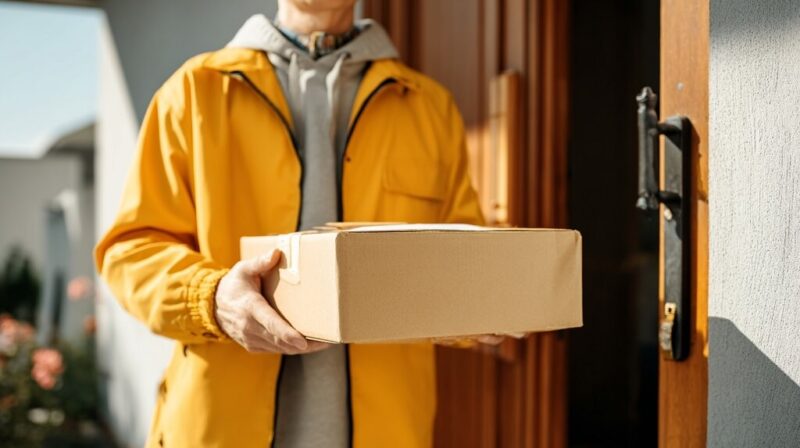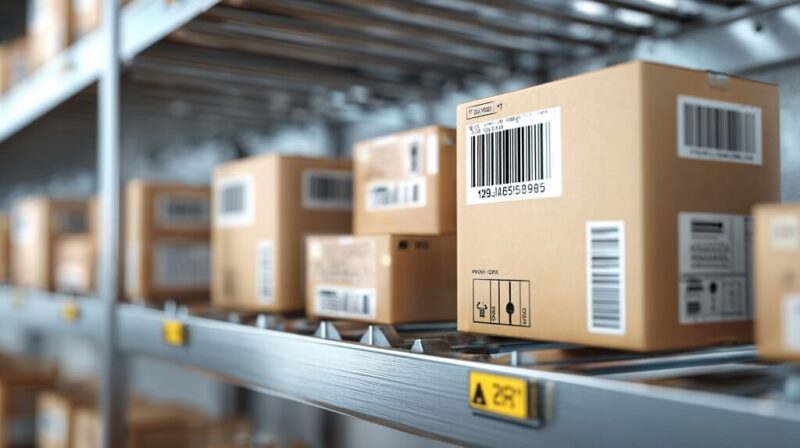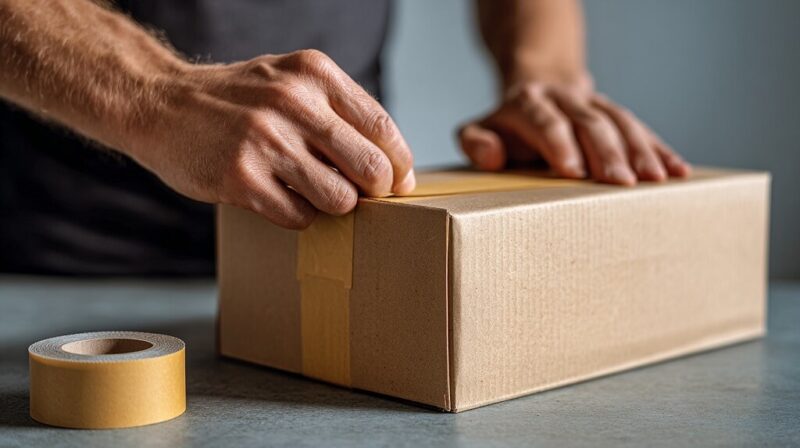Amazon Prime has fundamentally changed how people shop. The blue badge has become synonymous with fast delivery, easy returns, and customer confidence. For Fulfilled by Merchant (FBM) sellers, this can look like an impossible standard to match, but it is not.
FBM sellers who understand logistics, pricing psychology, and buyer trust can compete directly with Prime listings and still maintain independence over their inventory and profit margins.
The concrete path to doing this involves optimizing fulfillment times, using regional shipping partners, automating performance metrics, and creating an experience that feels as reliable as Prime, sometimes even better.
The goal is not to copy Prime but to deliver on the same promises through smarter systems and local efficiency.
Step 1: Promise a Delivery Window You Can Keep Every Time
The first battle is trust, and trust starts with delivery predictability. Most customers choose Prime because they know what to expect. FBM sellers can compete by setting and consistently meeting realistic delivery promises.

That requires aligning product handling times with actual carrier performance. For example, an order fulfilled within 24 hours but shipped via a slow courier will still disappoint.
You need accurate mapping of transit zones and a structure that shortens the “order-to-door” window as much as possible.
| Shipping Option | Delivery Speed | Recommended Weight Range | Typical Cost Impact | Notes |
| USPS Ground Advantage | 2–5 business days | Up to 1 lb | Low | Cost-effective for small parcels |
| UPS 2nd Day Air | 1–2 days | Up to 10 lbs | Medium | Great for time-sensitive deliveries |
| FedEx Home Delivery | 1–3 days | Up to 70 lbs | Medium | Reliable for residential zones |
| Regional Courier | Same or next day | Varies | High | Ideal for local customer bases |
Sellers should create regional delivery maps and adjust handling times by zone. If your warehouse is in Tennessee, a 1–2 day delivery can easily cover the Southeast, while a 3–5 day delivery is realistic for the West Coast. Proper zoning prevents broken promises and late-shipment penalties.
Step 2: Build a Logistics Foundation That Supports Fast Turnaround
The difference between a struggling FBM business and a scalable one lies in how fulfillment is structured behind the scenes. Running operations out of a single small storage space may work for local orders, but not for nationwide reach.

To compete with Prime’s network of over 100 fulfillment centers, FBM sellers can build regional presence through third-party prep centers and micro-warehouses. These facilities receive your inventory, package it under your branding, and ship orders directly.
One standout example is Dollan Prep Center in Delaware, which helps FBM sellers minimize sales tax exposure and reduce delivery zones by positioning inventory strategically on the East Coast. By using such prep centers, sellers can achieve 1–3 day shipping coverage across large regions without the overhead of maintaining multiple warehouses.
| Fulfillment Setup | Description | Delivery Coverage | Average Savings | Notes |
| Single warehouse (in-house) | One facility handling all orders | Limited (2–5 days) | Low | Best for small volume |
| Hybrid model (in-house + prep center) | Combine local storage with 3PL, like Dollan Prep Center | Regional 1–3 days | Medium | Optimal for scalability |
| Nationwide 3PL | Fully outsourced fulfillment | 1–2 days nationwide | High | Best for high-volume sellers |
The hybrid model often provides the best balance – sellers keep full control of key SKUs while delegating high-turnover or regional orders to external partners.
Step 3: Master Amazon’s Fulfillment Metrics to Stay Competitive
Amazon’s Buy Box heavily favors sellers who demonstrate reliable shipping metrics. If you want to appear alongside Prime listings, these three statistics are non-negotiable:
| Metric | Target | Why It Matters | How to Maintain |
| Late Shipment Rate | Under 4% | Affects Buy Box visibility | Print and ship within 24 hours |
| On-Time Delivery | Above 97% | Directly impacts customer trust | Use carriers with guaranteed delivery times |
| Valid Tracking Rate | Above 95% | Protects against false A-to-Z claims | Always use integrated shipping labels |
Use automated tools like Veeqo, Orderhive, or ShipStation to instantly update tracking numbers in Seller Central. Small automation investments dramatically reduce late-upload penalties that can quietly erode seller health scores.
Step 4: Compete on Price Using Landed-Cost Logic
FBM sellers should never simply undercut Prime listings. Instead, focus on landed cost – the total price (item + shipping) that appears competitive while keeping your margins safe.
Customers perceive value based on the final number, not how it breaks down.
For instance, pricing an item at $18.99 with $2.99 shipping often looks more appealing than $21.50 with “free” delivery, even though the total cost is nearly identical.
| Product Type | Average Prime Offer | Smart FBM Counter | Reasoning |
| Lightweight (under 1 lb) | $19.99 | $18.49 + $2.99 shipping | Still under $22 threshold |
| Oversized (10+ lbs) | $59.99 | $54.99 + local delivery | Customer sees local value |
| Niche / handmade | $24.99 | $26.49 (premium narrative) | Focus on uniqueness |
Pricing psychology is one of the easiest levers to match Prime competitiveness without slashing profitability.
Step 5: Deliver an “FBM Prime” Experience Through Handling and Packaging

Prime trains buyers to expect neat packaging, fast scanning, and zero confusion. FBM sellers can meet this expectation through efficiency and small brand touches that Prime can’t personalize.
- Branded boxes or inserts build recognition.
- Eco-friendly or recycled materials attract conscious buyers.
- Order verification slips reduce claims of “wrong item received.”
- Thermal labels and barcode accuracy ensure carrier acceptance.
These elements transform what might feel like a small independent seller into a professional operation. Customer retention rises when the first impression is solid and tracking updates are precise.
| Packaging Element | Function | Benefit |
| Branded filler or thank-you card | Reinforces identity | Boosts repeat orders |
| QR code for warranty or feedback | Connects buyer to brand | Builds an email list legally |
| Reinforced corners or sleeves | Reduces transit damage | Lowers refund costs |
Remember, buyers equate “neat packaging” with “trustworthy seller.” You cannot buy Prime’s badge, but you can match, and even exceed, its perceived quality.
Step 6: Consider Seller-Fulfilled Prime (SFP) for Select SKUs
For sellers already meeting high standards, Amazon’s Seller-Fulfilled Prime is the middle ground between FBA and FBM. It allows your listings to carry the Prime badge while you ship directly. The requirements are strict but achievable with the right logistics backbone.
| Requirement | Amazon Expectation | Practical Tip |
| On-Time Shipment | ≥ 99% | Pre-pack items before the cutoff |
| Cancellation Rate | ≤ 0.5% | Maintain safety stock |
| Delivery Speed | 1–2 days | Use regional prep partners |
| Shipping System | 100% Amazon Buy Shipping | Integrate carriers properly |
SFP is ideal for sellers already close to Prime-level operations. It requires operational discipline but offers a major reward – full Prime exposure without sending your inventory into Amazon’s warehouses.
Step 7: Communicate Like Prime (or Better)

Amazon’s buyers rarely get personal messages from sellers. FBM operators can use this to their advantage by providing proactive, professional communication.
Send shipment confirmation messages that include tracking details and expected arrival dates. If an issue arises (e.g., carrier delay, address correction), notify the customer before they reach out. It not only prevents negative reviews but also boosts your seller trust metrics.
A well-structured follow-up message post-delivery (without incentivizing reviews) can raise your overall rating by 0.2–0.4 stars, which has a direct impact on Buy Box share.
Step 8: Build Redundancy in Fulfillment and Inventory Control
Prime succeeds because it never depends on one warehouse. FBM sellers must develop similar redundancy by working with multiple fulfillment options or using 3PLs across different regions.
| Model | Description | Key Advantage | Risk Level |
| Pure FBM | You store and ship everything | Maximum control | Limited scalability |
| Hybrid FBM + 3PL | Split fulfillment between your location and regional partners | Faster regional shipping | Moderate complexity |
| FBM + FBA | Use FBA for high-volume SKUs | Prime access + flexibility | Higher storage cost |
Partnering with centers such as Dollan Prep Center gives FBM sellers the logistical power of a distributed network without the commitment of full FBA. It also provides tax-efficient routing, labeling compliance, and carton forwarding – essential for staying competitive during peak sales cycles.
Step 9: Build Review Momentum and Product Credibility

Prime listings benefit from thousands of reviews. FBM sellers must earn trust more carefully. Detailed listings, authentic photography, and real reviews replace the Prime badge’s credibility.
- Add lifestyle photos instead of white-background images.
- Include comparison tables showing differences versus competitors.
- Use A+ content to highlight specifications, materials, or certifications.
A single verified 5-star review mentioning “fast delivery” or “great packaging” does more for an FBM listing’s conversion rate than hundreds of vague ratings.
Step 10: Monitor, Adapt, and Scale Like a Logistics Company
Competing with Prime is not a one-time optimization; it’s a system of constant refinement. Review your Seller Central metrics weekly – especially Late Shipment, Cancellation, and Customer Feedback trends.
Build reports that show carrier performance by region, average delivery time, and refund causes. This data allows you to pinpoint inefficiencies – perhaps your Midwest orders arrive late more often, signaling the need for a second warehouse or regional prep partner.
| Metric | Ideal Range | Correction if Below Standard |
| Late Shipment Rate | <4% | Add an extra handling day |
| On-Time Delivery | >97% | Switch to a more reliable carrier |
| Customer Return Rate | <3% | Audit packaging or product specs |
| Feedback Score | >4.7 | Improve post-sale communication |
Read Also: How to Start Online Furniture Business
FBM vs. Prime: Strategic Comparison Table
| Attribute | Amazon Prime | Optimized FBM Seller |
| Shipping Speed | 1–2 days nationwide | 1–3 days regional, 3–5 nationwide |
| Branding | Amazon-only | Seller’s identity visible |
| Inventory Control | Locked in FBA | Fully independent |
| Cost Efficiency | Higher storage and fees | Lean and adaptive |
| Customer Contact | Limited | Direct relationship possible |
| Long-Term Value | Builds Amazon’s brand | Builds your brand |
Final Word
FBM sellers can absolutely compete with Amazon Prime – not by copying its structure but by leveraging their own strengths: operational flexibility, direct communication, regional fulfillment, and brand ownership.
Using strategic logistics partners like Dollan Prep Center to replicate Prime’s delivery speed while maintaining independence gives sellers the best of both worlds – control and competitiveness.

Hey, I’m Derek Vaughn. I love exploring how tech, business, and productivity come together to shape the way we work. At PulseBlueprint, I write about tools, trends, and strategies that actually make a difference—no fluff, just real-world insights.







